|







| |
 |
Super directive, Arbitrary characteristic microphone |
 | Microphone array : max 8ch |
 | Ex_Tool system configuration
(1) DSP : RU-DQ13
1 board
(2) AD/DA : RU-AX84 2 boards
(3) Chassis : 5 slots |
 | Programmable parameters
(1) Number of microphone inputs : 1 - 8ch
(2) Sampling frequency : 500Hs - 48KHz
(3) Analog filter cut-off frequency : 100 - 20KHz
(4) Number of Fir taps : Beam-steering filter - 2K taps Adaptive filter
- 2K taps
(5) Step-size parameter for ADF
(6) Noise level for System identification
(7) Number of cycles for System identification |
 | Algorithm for Beam-Forming : B.Widrow, Griffiths-Jim |
 | Coefficient viewer |
 | Windows 2000/XP/Vista/7 |
 | Software name : DQabf (RU-DQ13 Adaptive Beam
Former)
|
| Algorithm |
Sampling Frequency |
Number of taps for
Steering FIR |
Number of taps for
Adaptive FIR |
| B.Widrow |
48KHz |
300 |
640 |
|
24KHz |
400 |
1300 |
| Griffiths-Jim |
48KHz |
400 |
750 |
|
24KHz |
600 |
1600 |
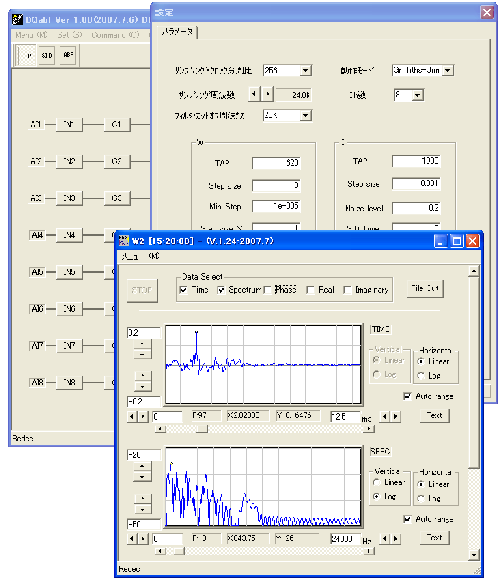
 | Ingredients
1. Microphones : Audio-technica AT9842 (5,250 yen)
2. Microphone Amplifiers : Audio-technica AT-MA2 ( 6,510 yen )
3. Redec Ex_Tool
|
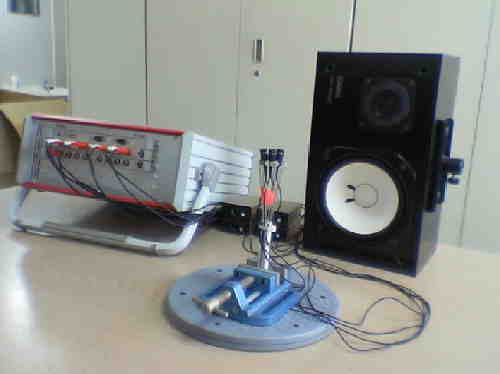
Ex_Tool (left), Microphone array probe,
Speaker
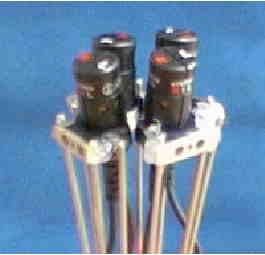
Microphone array probe
 | Recipe
1. Derive the Beam-steering filter coefficients in the look direction by system
identification. (Yellow arrow)
2. Let the system learn the directional reception as turning a
rotating table. (Blue arrow)
3. Measure the receiving characteristics on each direction.
|
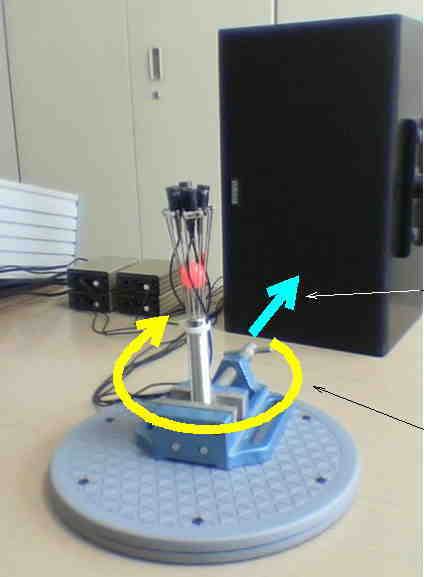
Blue arrow : Setting the look direction
Yellow arrow : Learning the directional reception
 | Result
The following graphs show it is possible to make the microphone probe
directional even if in an office room with sound reverberation.
|
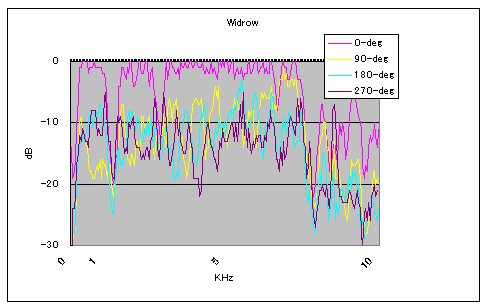
Widrow
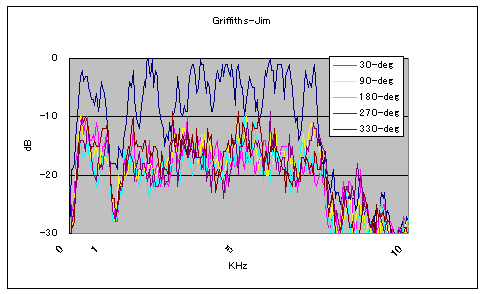
Griffiths-Jim
|
